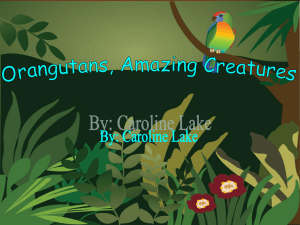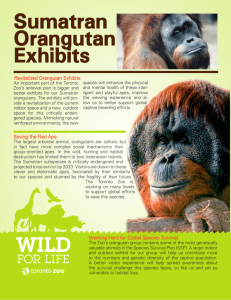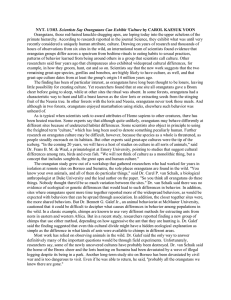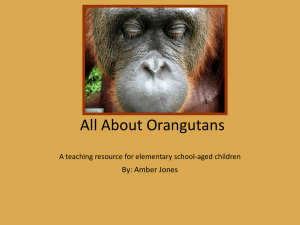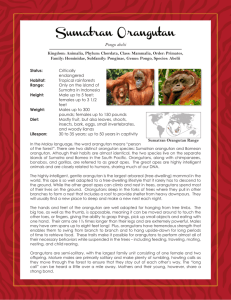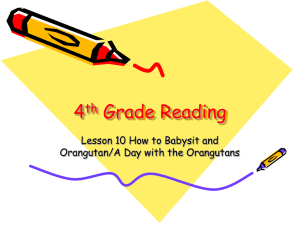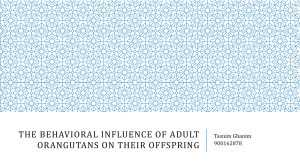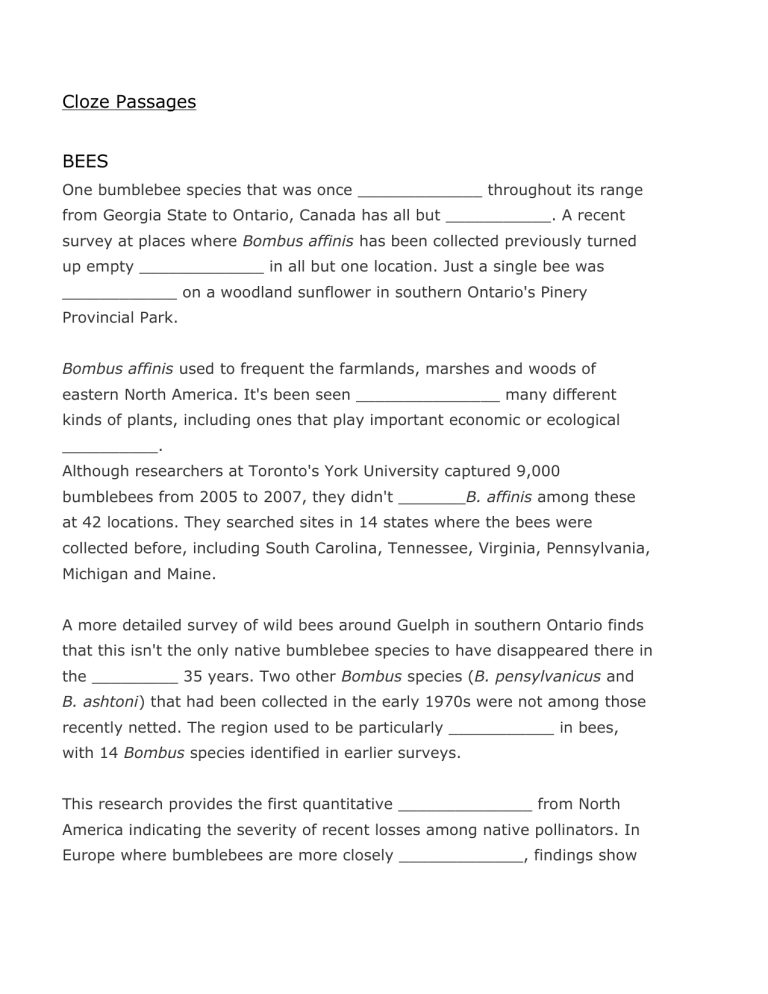
Cloze Passages BEES One bumblebee species that was once _____________ throughout its range from Georgia State to Ontario, Canada has all but ___________. A recent survey at places where Bombus affinis has been collected previously turned up empty _____________ in all but one location. Just a single bee was ____________ on a woodland sunflower in southern Ontario's Pinery Provincial Park. Bombus affinis used to frequent the farmlands, marshes and woods of eastern North America. It's been seen _______________ many different kinds of plants, including ones that play important economic or ecological __________. Although researchers at Toronto's York University captured 9,000 bumblebees from 2005 to 2007, they didn't _______B. affinis among these at 42 locations. They searched sites in 14 states where the bees were collected before, including South Carolina, Tennessee, Virginia, Pennsylvania, Michigan and Maine. A more detailed survey of wild bees around Guelph in southern Ontario finds that this isn't the only native bumblebee species to have disappeared there in the _________ 35 years. Two other Bombus species (B. pensylvanicus and B. ashtoni) that had been collected in the early 1970s were not among those recently netted. The region used to be particularly ___________ in bees, with 14 Bombus species identified in earlier surveys. This research provides the first quantitative ______________ from North America indicating the severity of recent losses among native pollinators. In Europe where bumblebees are more closely _____________, findings show that half the continent's species are declining. Three species of bumblebees have gone _____________ in United Kingdom alone. The reasons for a bee population's __________ likely vary among species and habitats. Two agricultural activities could be extensively harming bumblebees, although the ramifications have yet to be adequately investigated in North America. Imported bees used for _____________ plants grown commercially in greenhouses are known to introduce diseases to their wild relatives. ORANG UTANS For the two _____________found on the islands of Sumatra and Borneo in southeast Asia, mature tropical rainforests are _____________ to their survival. Orangutans live entirely in ____________. The reason why orangutans are endangered can be summed up with two words: habitat loss. Pressure to destroy mature forests and orangutans comes from multiple sources. The demise of an orangutan population often begins with _____________ a road through pristine forest. A new road brings in entrepreneurs and settlers keen to ______________ the tropical forest and clear land. Loggers, farmers, poachers and pet dealers all play a role in the endangered orangutan's __________. Deforestation over the last few decades has devastated orangutans. The number of orangutans on Borneo _____________ by over half in the last 60 years. On Sumatra, the orangutan population is just one-fifth of what it was 75 years ago. Sumatran orangutans are the most _____________ great ape in the world. Unfortunately, their future is ___________. New roads are planned for forests in the Singkil Swamps Wildlife Reserve on northern Sumatra. These rich forests ___________ the world's highest density of orangutans. Also living in the reserve are Sumatran tigers, Sumatran rhinoceroses and Sumatran elephants, all endangered animals. __________ is the primary threat to orangutan habitat. Loggers have ___________ trees at a rapid pace during recent years. In just 25 years, from 1980 to 2005, 80 percent of Indonesia's old-growth forests were logged. Each year on northern Sumatra alone, forests supporting 1,000 orangutans were lost during the 1990s. About three-quarters of orangutans now live outside of protected areas in rainforests open to logging. But a park or wildlife reserve provides no _____________ that the forests won't be cut. _________ logging continues at rampant speed on a large industrial scale, both __________ and outside of parks on Borneo and Sumatra. For instance, over half of Gunung Palung National Park on Borneo, an important orangutan ____________, was logged by 2001. In another case, illegal loggers on Borneo moved into an area of productive peat-swamp forest, after it was already legally logged, and ________________half the population of 13,000 orangutans in seven years. Some orangutans can ____________ selective logging, where just a few trees are cut and most are left standing. Taking mature trees ____________ the supply of fruit that forms the bulk of the orangutan diet. Sumatran orangutans are especially ____________ upon forest fruit and so even with selective logging, their population drops by 60 percent. Bornean orangutans of the northeastern subspecies have stronger jaw bones and other features that allow them to eat a more fibrous ___________ of bark and leaves. This adaptation appears to enable the subspecies to survive in lightly logged forests. Not only logging destroys rainforests on Borneo. Climate change has caused the island to suffer more ___________ severe droughts, leading to large forest fires. Fires in 1997 and 1998 on Borneo killed an estimated one-third of the orangutan population in a year. One peat-land fire covering 400,000 hectares killed probably 8,000 orangutans. Forests covering 90 percent of Kutai National Park were ___________ by massive fires in 1983 and 1998, and the park's orangutan population declined from about 4,000 individuals to just 500. Forests to Fields While logged forests might ___________ a few orangutans, converting rainforest land to agriculture entirely _____________ orangutan habitat. Forests, especially the low elevation ones that best support orangutans, have been rapidly _____________ and transformed into oil palm plantations and food crops. Palm oil is a cash crop exported for making foods, cosmetics and biofuel. The area on Borneo planted to oil palms _____________ from 2,000 square kilometers in 1984 to 27,000 in 2003. Palm plantations have taken over prime orangutan habitat in the eastern lowlands of Sabah and on the plains between the Sampit and Seruyan rivers. On northern Sumatra, where the last stronghold of ___________ endangered Sumatran orangutans remains, refugees from both civil war and the tsunami have moved into the forest, establishing settlements and farms. People __________ civil war have settled inside protected areas, cleared forest and ___________ land into food crops and palm oil businesses. The 2004 tsunami sent survivors inland, into the rainforest looking for higher ground to resettle on and wood to rebuild with. DOLPHINS It was __________ in the press on 18 December, that two of the seven bottle nosed dolphins destined for Resorts World Sentosa (RWS) died in October from an __________ bacterial infection of Melioidosis, in a holding area in Langkawi Island, Malaysia. Although RWS claims that the remaining five are in good condition, it is noteworthy that the two dolphins that died were in ‘perfect health’ before this as well. In a country like Singapore, with laws in place ____________ the taking of animals from the wild, it is extremely_____________ that we are accepting these wild caught dolphins for the purpose of forcing them to __________ to an unnatural lifestyle in RWS's Marine Life Park attraction. If RWS could change its stand on whale sharks, surely they can for the dolphins as well. Countries that have banned live __________ and exports of cetaceans include countries as _________ as India (imports) and Costa Rica (imports and exports). The United Kingdom and Brazil do not hold cetaceans in captivity, and Italy has banned swim-with-dolphins programs. Chile has prohibited the commercial display of all cetacean species. SPCA wrote to the Chairman of Resorts World Sentosa, Tan Sri Lim Kok Thay in February 2011 to __________ against the importation of the wild caught dolphins for the Marine Life Park. An official from Resorts World ________, stating that there is a role for zoos and aquariums in the ______________ of wildlife and in education, and that the dolphins are receiving round-the-clock veterinary care in the Philippines. As much as Resorts World claims that the well-being of all animals at its planned Marine Life Park is a top priority, the example it has set by capturing wild animals for the public's entertainment and ____________ their welfare contradicts its aim of educating and conserving the species. One bumblebee species that was once common throughout its range from Georgia State to Ontario, Canada has all but disappeared. A recent survey at places where Bombus affinis has been collected previously turned up empty handed in all but one location. Just a single bee was found on a woodland sunflower in southern Ontario's Pinery Provincial Park. Bombus affinis used to frequent the farmlands, marshes and woods of eastern North America. It's been seen visiting many different kinds of plants, including ones that play important economic or ecological roles. Although researchers at Toronto's York University captured 9,000 bumblebees from 2005 to 2007, they didn't find B. affinis among these at 42 locations. They searched sites in 14 states where the bees were collected before, including South Carolina, Tennessee, Virginia, Pennsylvania, Michigan and Maine. A more detailed survey of wild bees around Guelph in southern Ontario finds that this isn't the only native bumblebee species to have disappeared there in the last 35 years. Two other Bombus species (B. pensylvanicus and B. ashtoni) that had been collected in the early 1970s were not among those recently netted. The region used to be particularly rich in bees, with 14 Bombus species identified in earlier surveys. This research provides the first quantitative evidence from North America indicating the severity of recent losses among native pollinators. In Europe where bumblebees are more closely monitored, findings show that half the continent's species are declining. Three species of bumblebees have gone extinct in United Kingdom alone. The reasons for a bee population's decline likely vary among species and habitats. Two agricultural activities could be extensively harming bumblebees, although the ramifications have yet to be adequately investigated in North America. Imported bees used for pollinating plants grown commercially in greenhouses are known to introduce diseases to their wild relatives. As well, a group of insecticides called neonicotinoids, that are highly toxic to bees, have been applied to North American crops since the early 1990s. _______________________________________________________________________ For the two species of orangutans found on the islands of Sumatra and Borneo in southeast Asia, mature tropical rainforests are essential to their survival. Orangutans live entirely in trees. The reason why orangutans are endangered can be summed up with two words: habitat loss. Pressure to destroy mature forests and orangutans comes from multiple sources. The demise of an orangutan population often begins with building a road through pristine forest. A new road brings in entrepreneurs and settlers keen to exploit the tropical forest and clear land. Loggers, farmers, poachers and pet dealers all play a role in the endangered orangutan's decline. Deforestation over the last few decades has devastated orangutans. The number of orangutans on Borneo dropped by over half in the last 60 years. On Sumatra, the orangutan population is just onefifth of what it was 75 years ago. Sumatran orangutans are the most endangered great ape in the world. Unfortunately, their future is bleak. New roads are planned for forests in the Singkil Swamps Wildlife Reserve on northern Sumatra. These rich forests support the world's highest density of orangutans. Also living in the reserve are Sumatran tigers, Sumatran rhinoceroses and Sumatran elephants, all endangered animals. Logging Orangutan Habitat Logging is the primary threat to orangutan habitat. Loggers have cut trees at a rapid pace during recent years. In just 25 years, from 1980 to 2005, 80 percent of Indonesia's old-growth forests were logged. Each year on northern Sumatra alone, forests supporting 1,000 orangutans were lost during the 1990s. About three-quarters of orangutans now live outside of protected areas in rainforests open to logging. But a park or wildlife reserve provides no guarantee that the forests won't be cut. Illegal logging continues at rampant speed on a large industrial scale, both inside and outside of parks on Borneo and Sumatra. For instance, over half of Gunung Palung National Park on Borneo, an important orangutan habitat, was logged by 2001. In another case, illegal loggers on Borneo moved into an area of productive peat-swamp forest, after it was already legally logged, and eliminated half the population of 13,000 orangutans in seven years. Some orangutans can survive selective logging, where just a few trees are cut and most are left standing. Taking mature trees reduces the supply of fruit that forms the bulk of the orangutan diet. Sumatran orangutans are especially dependent upon forest fruit and so even with selective logging, their population drops by 60 percent. Bornean orangutans of the northeastern subspecies (Pongo pygmaeus morio), have stronger jaw bones and other features that allow them to eat a more fibrous diet of bark and leaves. This adaptation appears to enable the subspecies to survive in lightly logged forests. Rainforest Wildfires Not only logging destroys rainforests on Borneo. Climate change has caused the island to suffer more frequent severe droughts, leading to large forest fires. Fires in 1997 and 1998 on Borneo killed an estimated one-third of the orangutan population in a year. One peat-land fire covering 400,000 hectares killed probably 8,000 orangutans. Forests covering 90 percent of Kutai National Park were destroyed by massive fires in 1983 and 1998, and the park's orangutan population declined from about 4,000 individuals to just 500. Forests to Fields While logged forests might sustain a few orangutans, converting rainforest land to agriculture entirely eliminates orangutan habitat. Forests, especially the low elevation ones that best support orangutans, have been rapidly deforested and transformed into oil palm plantations and food crops. Palm oil is a cash crop exported for making foods, cosmetics and biofuel. The area on Borneo planted to oil palms expanded from 2,000 square kilometers in 1984 to 27,000 in 2003. Palm plantations have taken over prime orangutan habitat in the eastern lowlands of Sabah and on the plains between the Sampit and Seruyan rivers in central Kalimantan, among other areas. On northern Sumatra, where the last stronghold of critically endangered Sumatran orangutans remains, refugees from both civil war and the tsunami have moved into the forest, establishing settlements and farms. People fleeing civil war have settled inside protected areas, cleared forest and converted land into food crops and palm oil businesses. The 2004 tsunami sent survivors inland, into the rainforest looking for higher ground to resettle on and wood to rebuild with. It was reported in the press on 18 December, that two of the seven bottle nosed dolphins destined for Resorts World Sentosa (RWS) died in October from an acute bacterial infection of Melioidosis, in a holding area in Langkawi Island, Malaysia. Although RWS claims that the remaining five are in good condition, it is noteworthy that the two dolphins that died were in ‘perfect health’ before this as well. In a country like Singapore, with laws in place prohibiting the taking of animals from the wild, it is extremely disappointing that we are accepting these wild caught dolphins for the purpose of forcing them to adapt to an unnatural lifestyle in RWS's Marine Life Park attraction. If RWS could change its stand on whale sharks, surely they can for the dolphins as well.Countries that have banned live imports and exports of cetaceans include countries as diverse as India (imports) and Costa Rica (imports and exports). The United Kingdom and Brazil do not hold cetaceans in captivity, and Italy has banned swim-with-dolphins programs. Chile has prohibited the commercial display of all cetacean species. SPCA wrote to Today and Straits Times on 10 January reiterating its stand. Read our last letter to the press on the issue which went unpublished. SPCA wrote to the Chairman of Resorts World Sentosa, Tan Sri Lim Kok Thay in February 2011 to appeal against the importation of the wild caught dolphins for the Marine Life Park. An official from Resorts World replied, stating that there is a role for zoos and aquariums in the conservation of wildlife and in education, and that the dolphins are receiving round-the-clock veterinary care in the Philippines. As much as Resorts World claims that the well-being of all animals at its planned Marine Life Park is a top priority, the example it has set by capturing wild animals for the public's entertainment and compromising their welfare contradicts its aim of educating and conserving the species.
